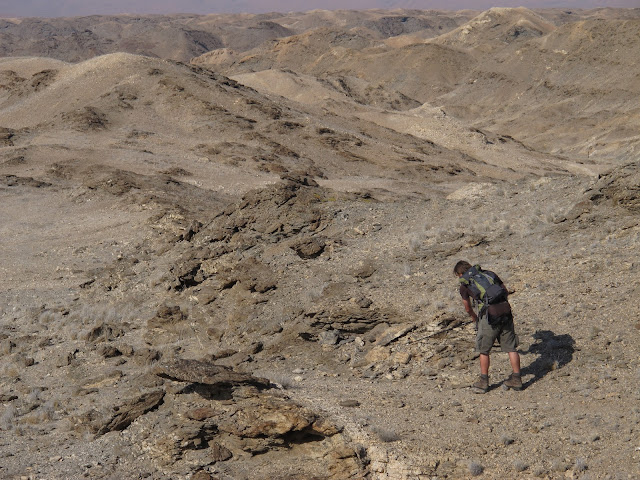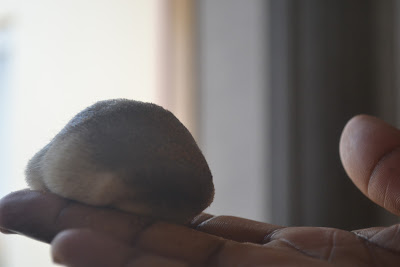Sorry for the overused Star Wars reference as the title, but for once it's appropriate seeing as 1) this actually is a station of some variety, and 2) Gobabeb can seem oddly extraterrestrial.
Another apology is in order for not updating since, well, we started the blog. August was an exceptionally hectic month here at Gobabeb, and the end of September has the makings to give August a run for its money. I wrote this blog post about three weeks ago and have utterly failed at braving the slow internet to post it. We have some backlog to catch up on, so you can actually bother to start checking this blog if you so desire!
Before we write any other blog posts, we should probably cover the basics: where and with whom we work (that’s too many words that start with the letter w).
So, first the Gobabebians! About 15-25 people call Gobabeb home at any given time, which at least makes it easy to remember names. We range in ages from late teens – grandparent status (I’d rather not risk guessing exact years), and stay here for varied amounts of time. Some of the interns are only here for three months, while our interim director, Mary Seely, has been affiliated with the station since the 60s (it was founded in 1962, for perspective) and quite literally wrote the book(s) on the Namib Desert. The Grinnell fellows’ tenure of a year doesn’t seem very long, but with relatively high turnover rates (especially for young staff), that will put us among the more permanent residents.
 |
| The majority of the 'young' staff |
Since Walvis Bay (the closest town) would be more than a bit of a commute, almost all the staff stay on site for extended periods of time. Some leave for days or weeks at a time to travel to Windhoek, Walvis Bay, or Cape Town for business and leisure, but always find their way back down the dusty road to Gobabeb. We come from all over, as well! Right now, countries represented are Namibia, South Africa, Germany, Spain, and the U.S., and previous (and future) residents would make that list much longer.
But we all rally together for the common cause, Gobabeb! Staff is generally divided into the research section, training section, the library, and center service staff. The training section is relatively small, consisting of me (Noah), two other staff, and a supervisor.
 |
| A sad farewell to Tina, who left us to return to Germany |
While no section here is large by any measure, the research section makes up the bulk of the staff. There are several research technicians, interns, a new GIS specialist, and couple master’s students. The master’s students are mostly conducting their own research at Gobabeb, retaining a certain level of autonomy and escaping from some of the tedious tasks. Anna, while partially fitting under research, also kind of single-handedly runs the IT side of the station, and therefore gets her own office. It’s the least they can do.
 |
| The main station gate |
|
Our library isn’t quite big enough to warrant more than one permanent staff and an intern, although they do enlist the help of the rest of the station from time to time. Then we have the center service staff and site staff, who work tirelessly to ensure that everything runs smoothly administratively and physically. Blowing sand is just about as bad as mud when trying to keep a building clean.
Speaking of buildings, we have them! Gobabeb’s whitewashed, single-story structures rise (with the exception of our majestic water tower) unceremoniously from the gravel plains, yet these unassuming buildings house almost all aspects of our daily lives. Our lives, both at and outside of work, are condensed by the Gobabeb microhabitat. By the time I’ve walked out my door in the morning, walked to the kitchen to the kitchen to make some breakfast, then headed over to the office, I’ve traveled probably no more than 400 meters.
 |
| The office...complex? |
Most of the offices are clustered around an open courtyard, with the library and lab protruding from one side to make an L-shape. Another L-shape of rooms and buildings, which mirrors the offices, houses maintenance, storage, and our energy centre (again, we’ll post more on that later). Beyond the immediacy of the main station are several out buildings, including the resource center and multi-purpose hall where I work with school groups, and our rather odiferous trickle filter.
We live in apartment-type housing, caravans, and small houses dispersed throughout different parts of the station, and since most of the housing for young staff doesn’t have kitchen and/or lounging amenities, we take refuge in a white brick building aptly named ‘Old House.’ I could, and probably will, write a whole blog post on Old House, but I don’t think I’m wrong in calling it the hippest (only) social scene at Gobabeb.
 |
| ...Yep, that's about all of it |
|
More to come, we promise. We’ll get better at updating, at least with pictures! Hope all is well state-side and around the world, love from Gobabeb!
 |
| Really, once you get it going, it drives...kind of fine? |
|
|
 |
| I thought it was a good idea to go up until I realized I had to go down |

-061.jpg)
.JPG)



.JPG)














































